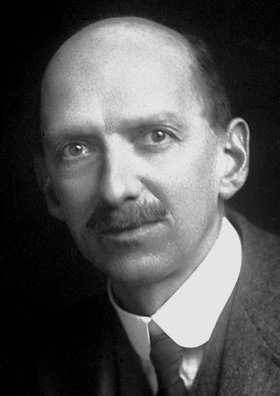Why was Charles Thomson Rees Wilson Awarded the Noble Prize for Physics in 1927?
Charles Thomson Rees Wilson: A Nobel Prize for Pioneering Atmospheric Science (1927)
Charles Thomson Rees Wilson, a Scottish physicist, made groundbreaking contributions to the field of atmospheric science during the early 20th century. Renowned for his innovative experiments and inventions, Wilson played a pivotal role in advancing our understanding of cloud formation and the behavior of ionized particles. In recognition of his exceptional research, he was awarded the Nobel Prize for Physics in 1927. This article explores the reasons behind Wilson’s prestigious honor and highlights his significant scientific breakthroughs.

The Invention of the Cloud Chamber:
Charles Thomson Rees Wilson Nobel Prize was primarily awarded for his invention of the cloud chamber—a revolutionary device that allowed for the observation and study of subatomic particles and cloud formation. Wilson designed and built the first practical cloud chamber in 1911, revolutionizing the field of particle physics and atmospheric science.
The cloud chamber consisted of a sealed container filled with supersaturated vapor. When an ionizing particle passed through the chamber, it caused condensation, forming visible droplets along its path. This enabled scientists to observe and track the trajectory of ionized particles, providing valuable insights into their behavior.
Understanding Cosmic Rays and Particle Physics:
Wilson’s cloud chamber proved instrumental in studying cosmic rays and advancing our understanding of particle physics. By examining the tracks left by ionizing particles in the chamber, scientists could investigate the nature and properties of subatomic particles.
The cloud chamber enabled the discovery and identification of various particles, including electrons, positrons, protons, and alpha particles. Moreover, it facilitated the study of radioactive decay, nuclear reactions, and the interactions of particles with matter. Wilson’s invention revolutionized the field, providing a valuable tool for investigating the fundamental building blocks of the universe.
Impact on Atmospheric Science:
Wilson’s contributions extended beyond particle physics. His cloud chamber had a profound impact on atmospheric science, particularly in the study of cloud formation and meteorology. By observing the formation of water droplets in the chamber, scientists gained insights into the physics behind cloud nucleation and growth.
Wilson’s cloud chamber experiments also shed light on the role of ions in atmospheric processes. His research revealed that ionization played a significant role in the formation and behavior of clouds, influencing weather patterns and atmospheric conditions. These insights continue to shape our understanding of meteorology and climate science today.
Recognition and Legacy:
Charles Thomson Rees Wilson Nobel Prize for Physics in 1927 honored his pioneering work in atmospheric science and particle physics. His invention of the cloud chamber revolutionized the study of subatomic particles, enabling significant advancements in particle physics and nuclear research. Additionally, his research on cloud formation and the role of ions in the atmosphere deepened our understanding of atmospheric processes.
Wilson’s invention continues to inspire scientists and remains an invaluable tool in various fields of research. The cloud chamber has played a crucial role in numerous scientific discoveries and advancements, contributing to our understanding of the universe, atmospheric physics, and the behavior of subatomic particles.
Conclusion:
Charles Thomson Rees Wilson’s Nobel Prize for Physics in 1927 celebrated his groundbreaking contributions to atmospheric science and particle physics. His invention of the cloud chamber transformed our ability to observe and study ionized particles and cloud formation. Wilson’s innovative device paved the way for significant advancements in particle physics, atmospheric science, and meteorology. His legacy serves as a testament to the transformative power of inventive experimentation and its profound impact on our understanding of the natural world.




